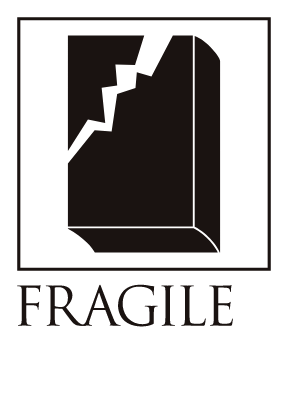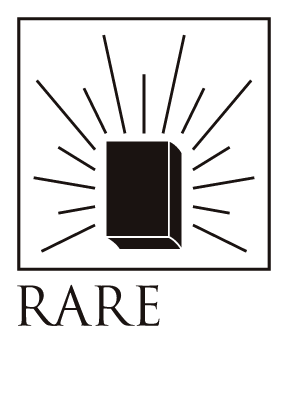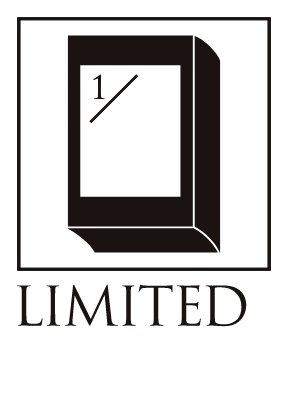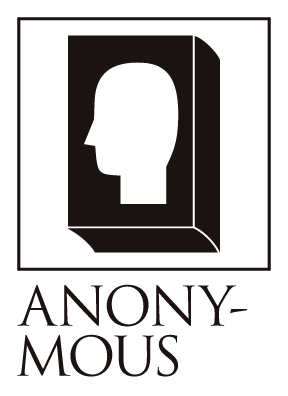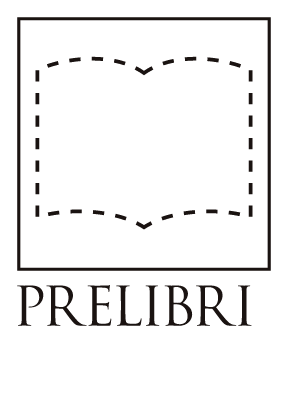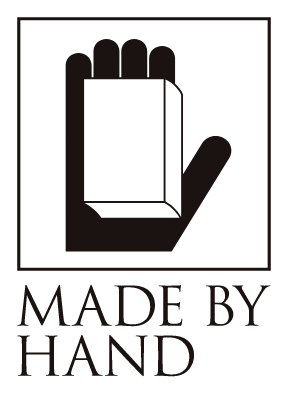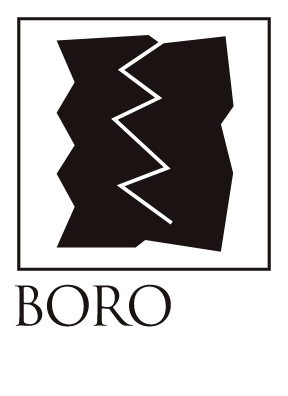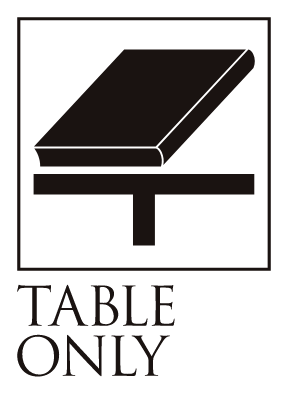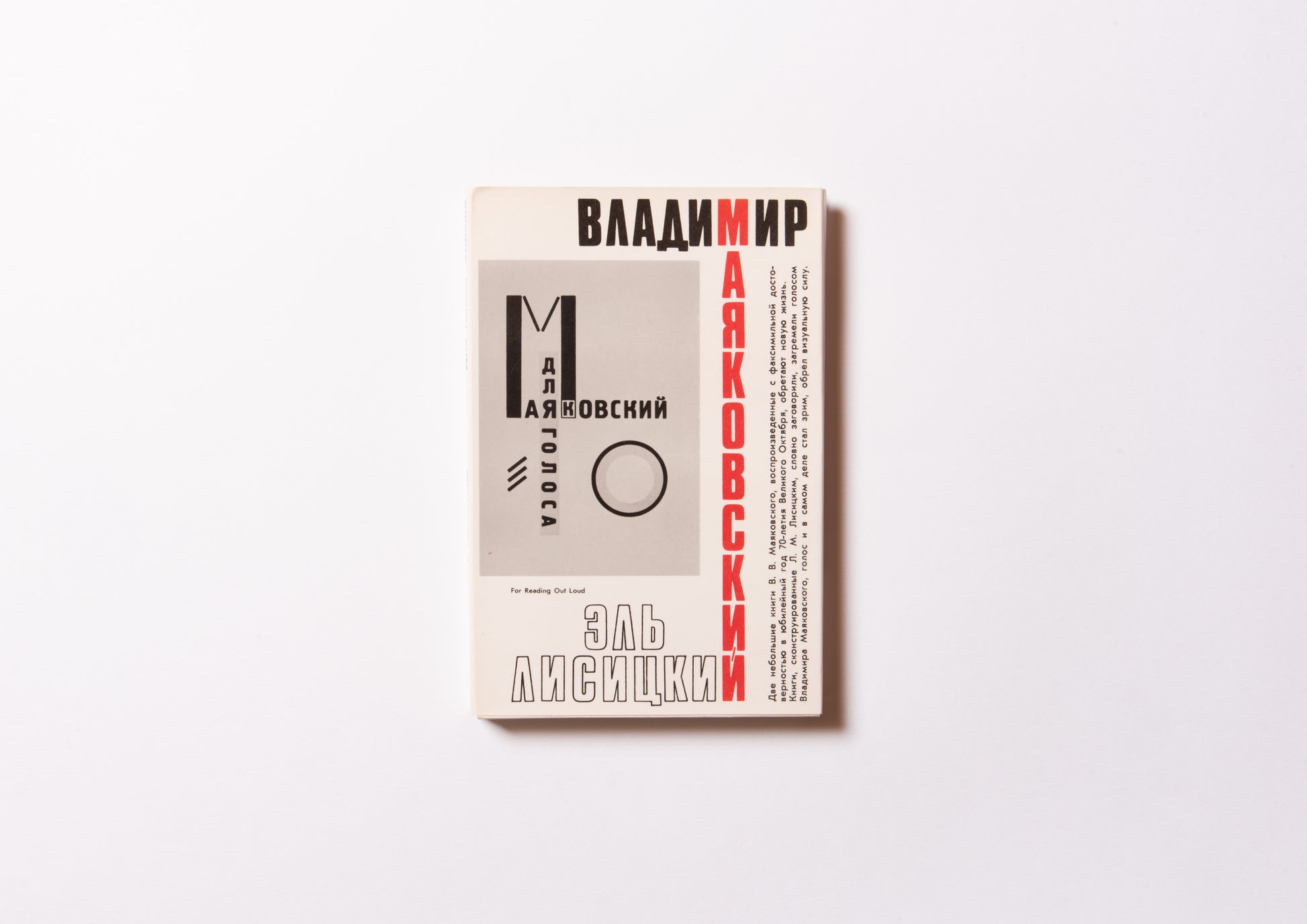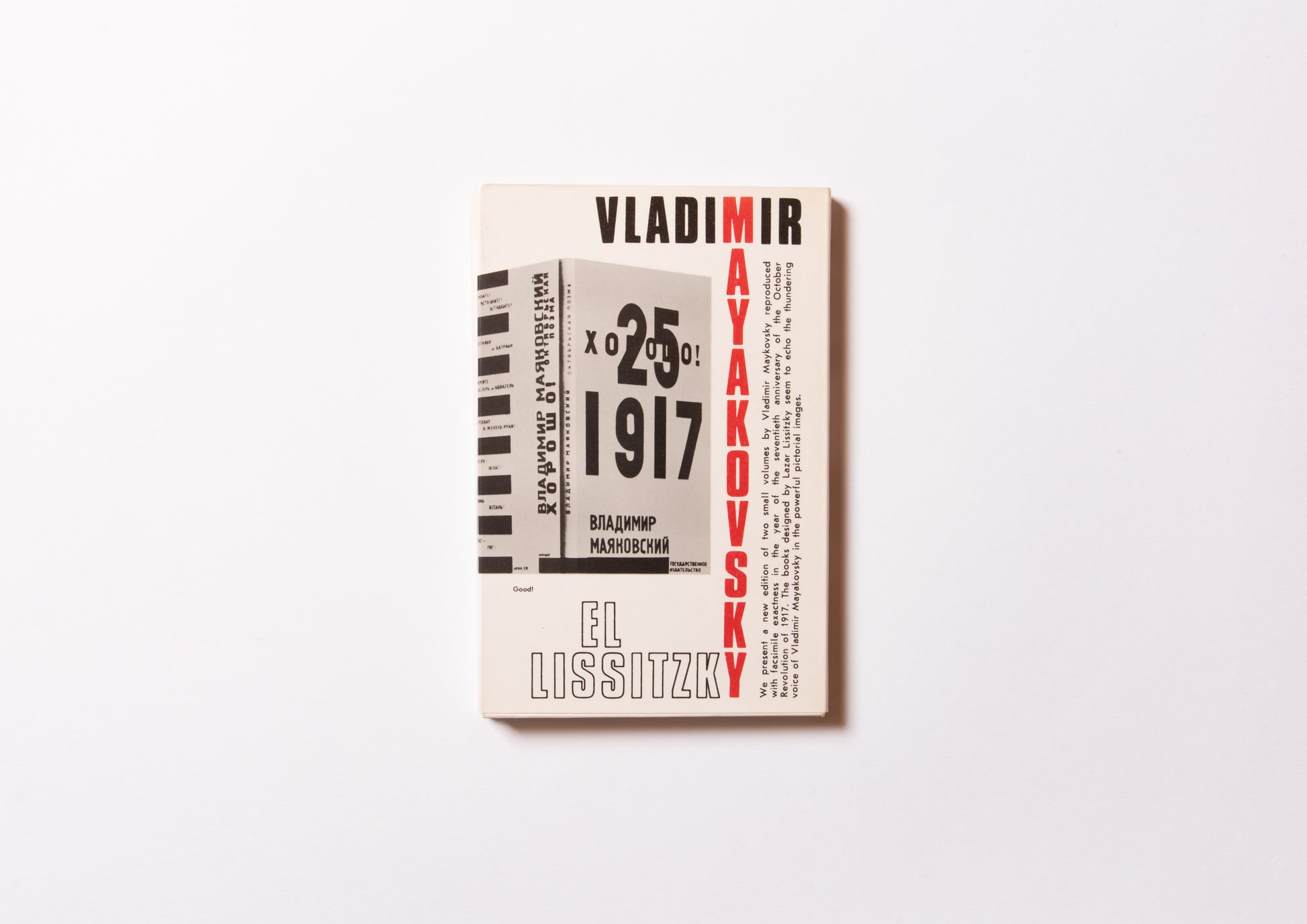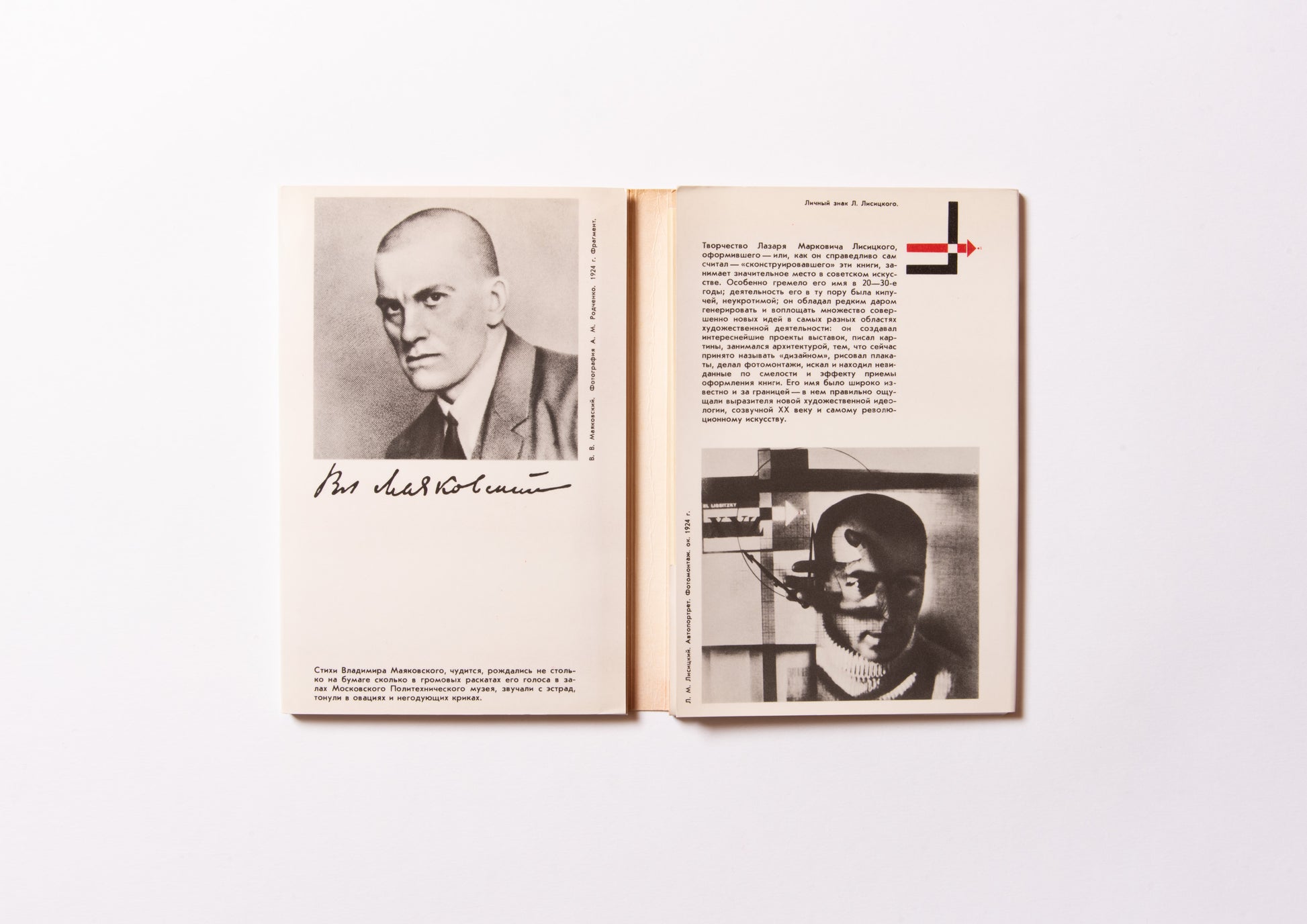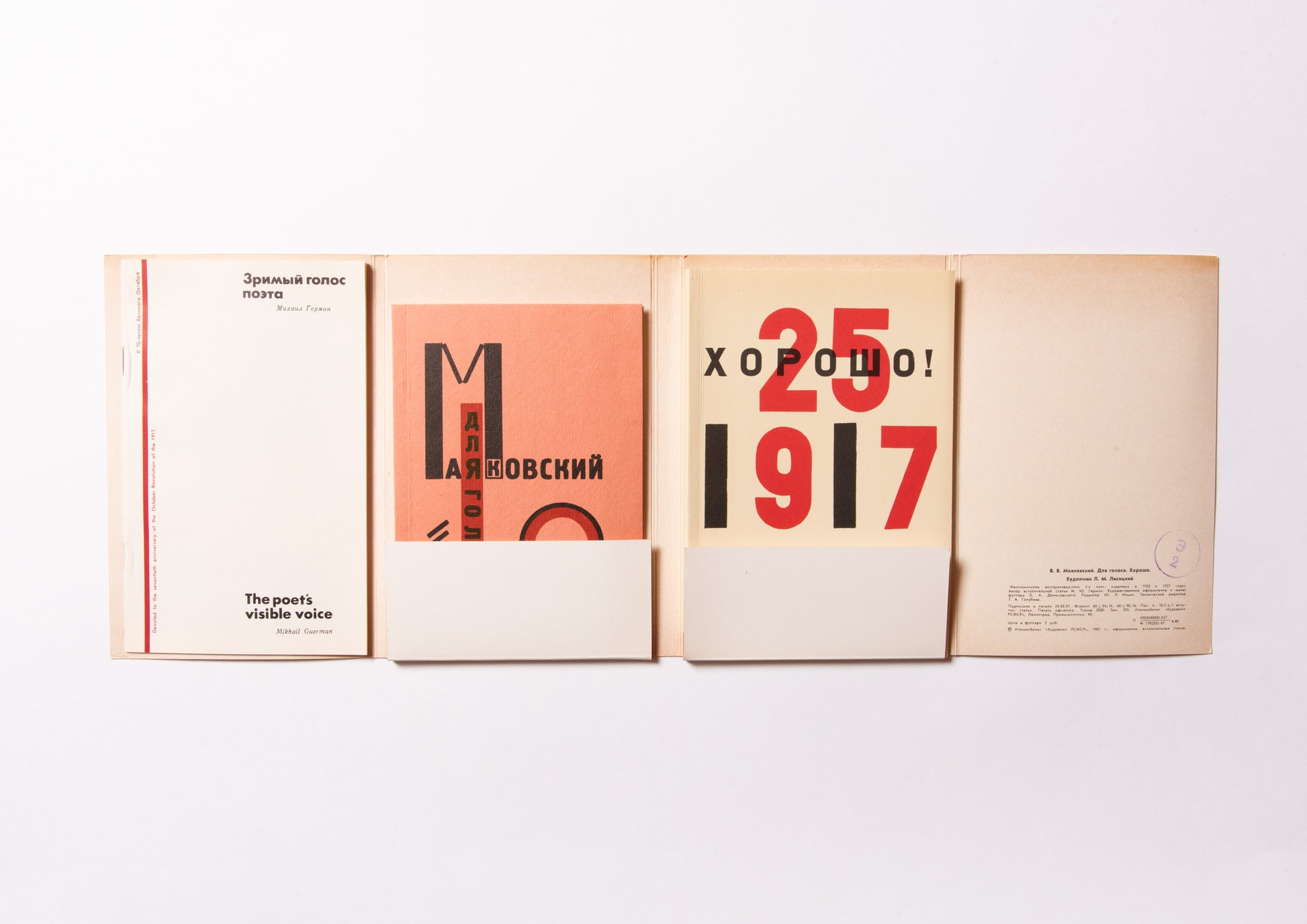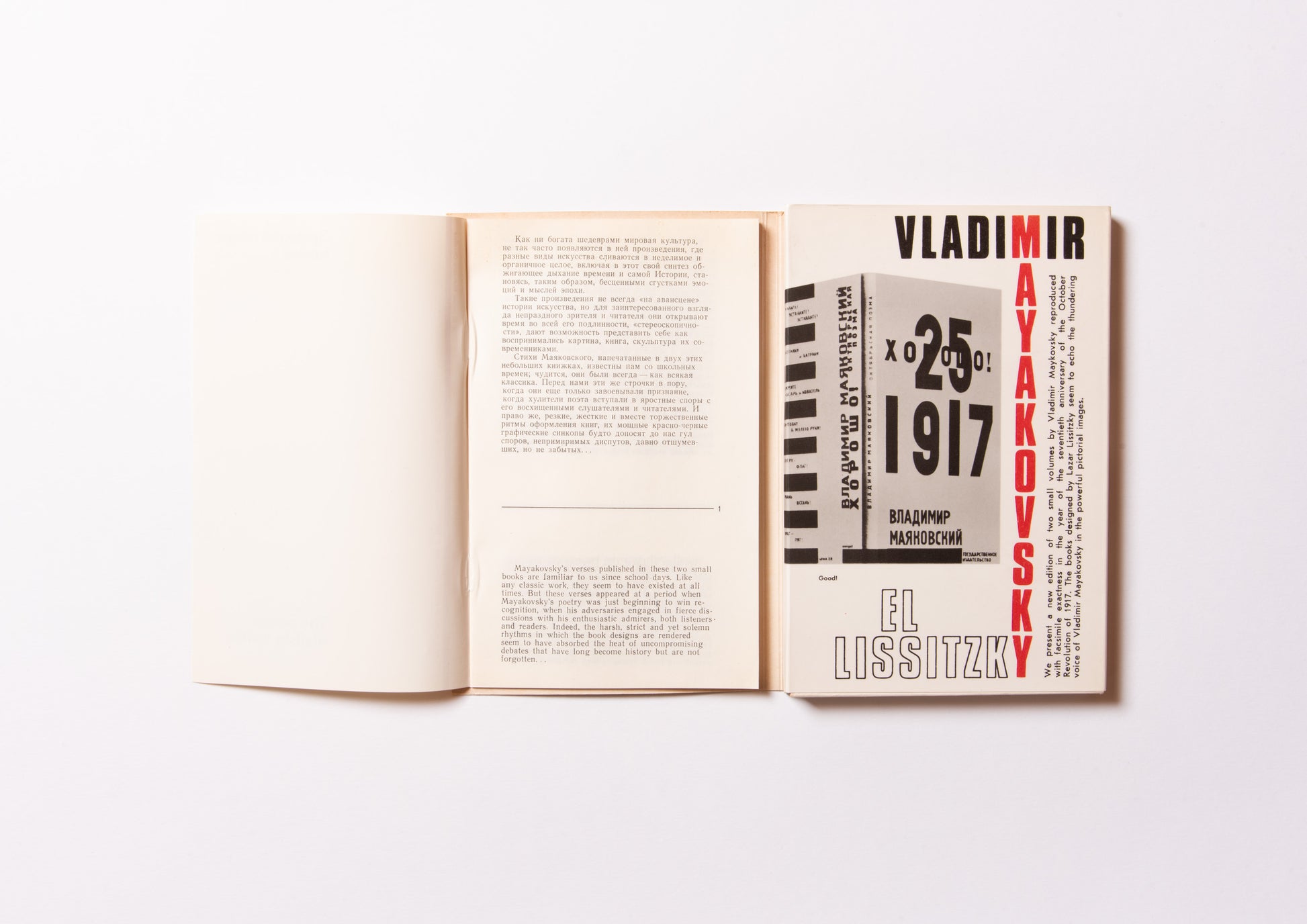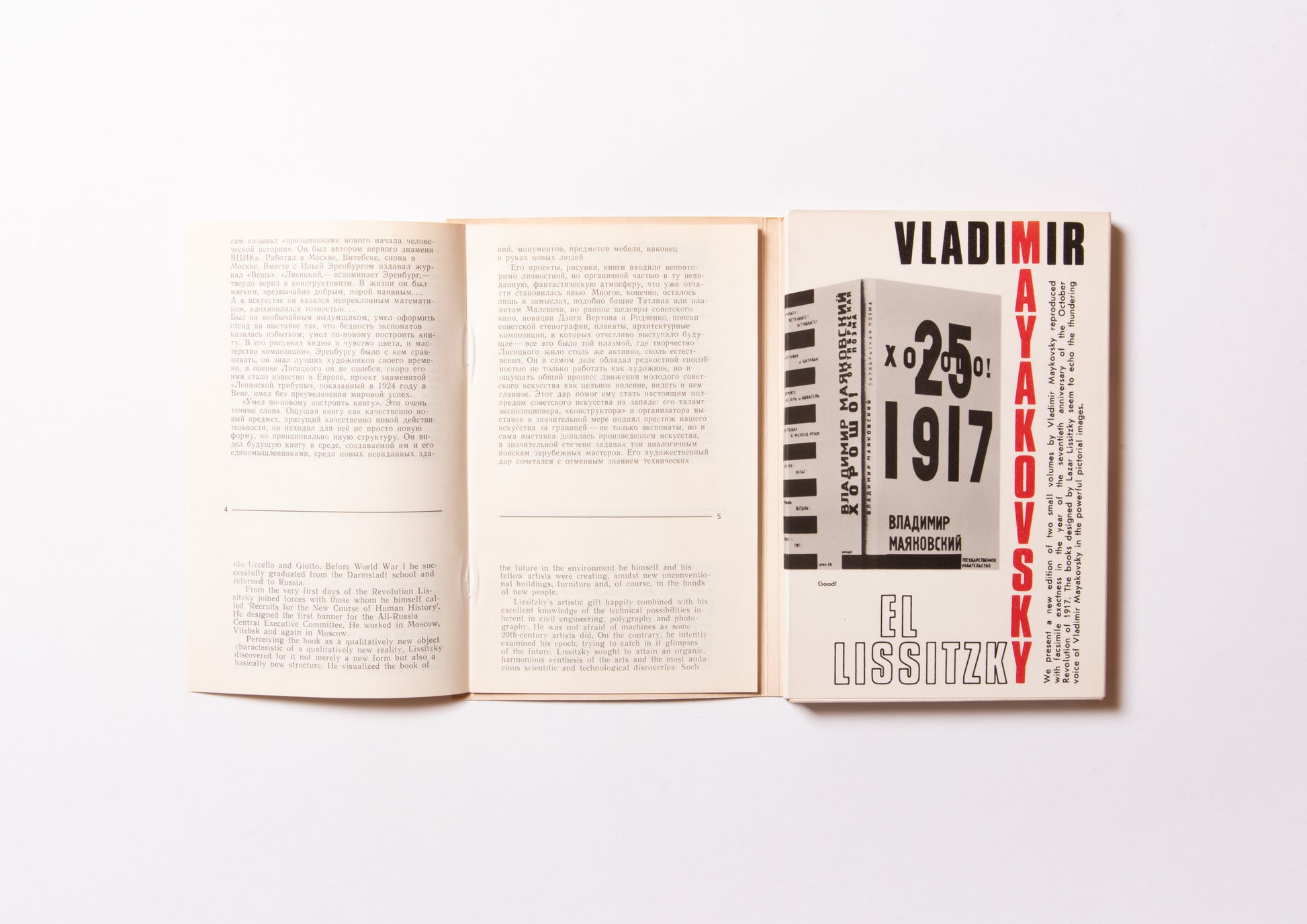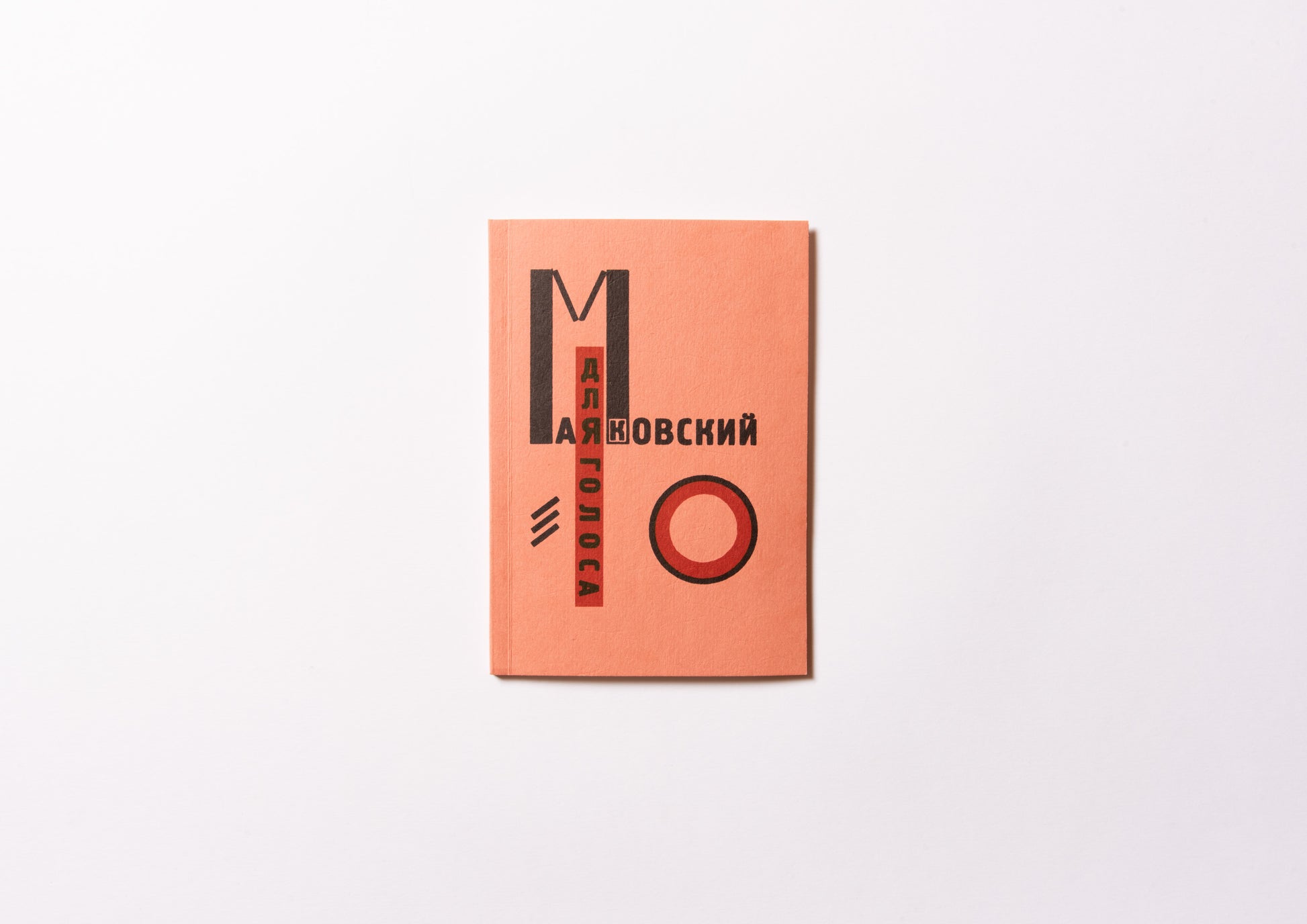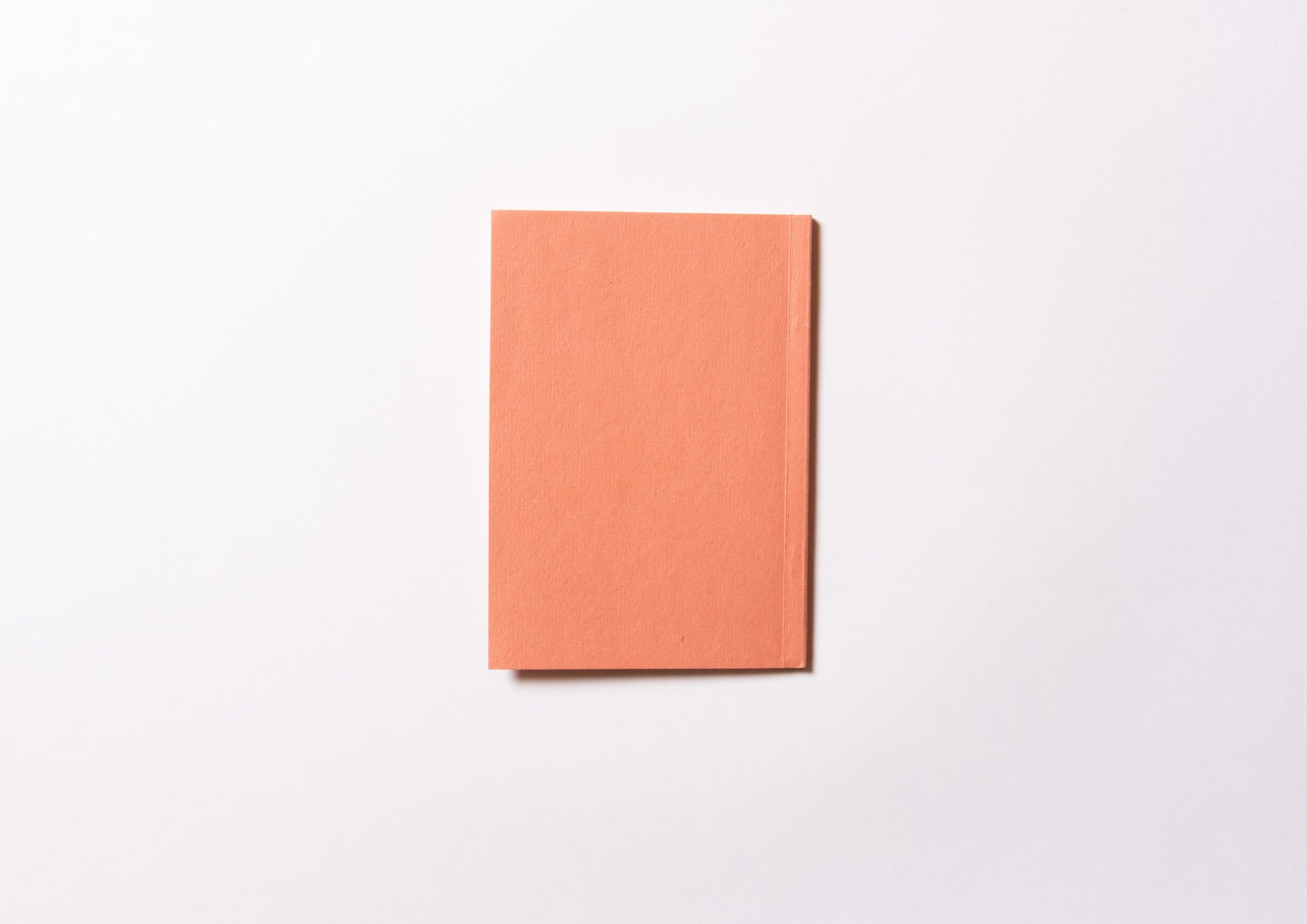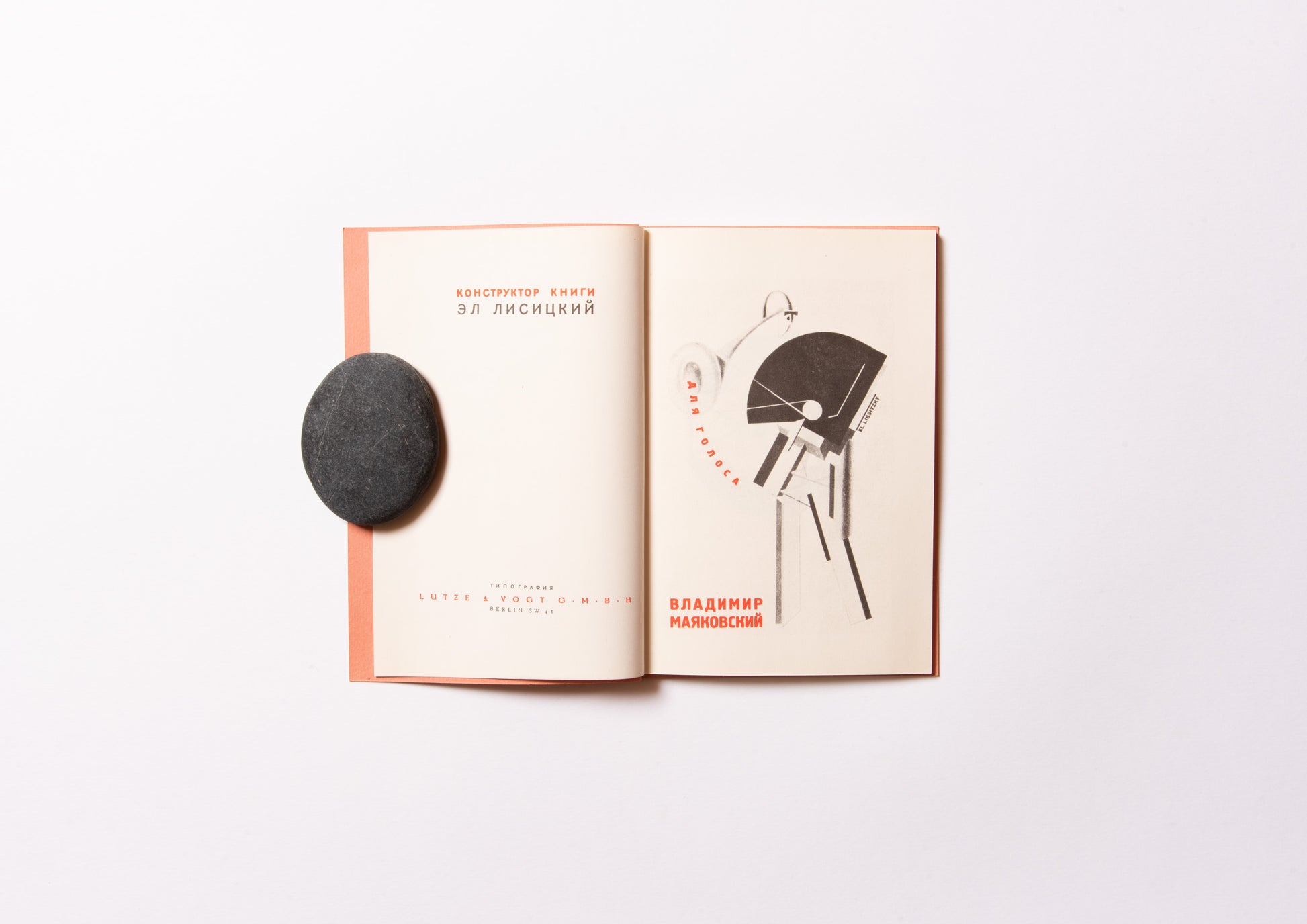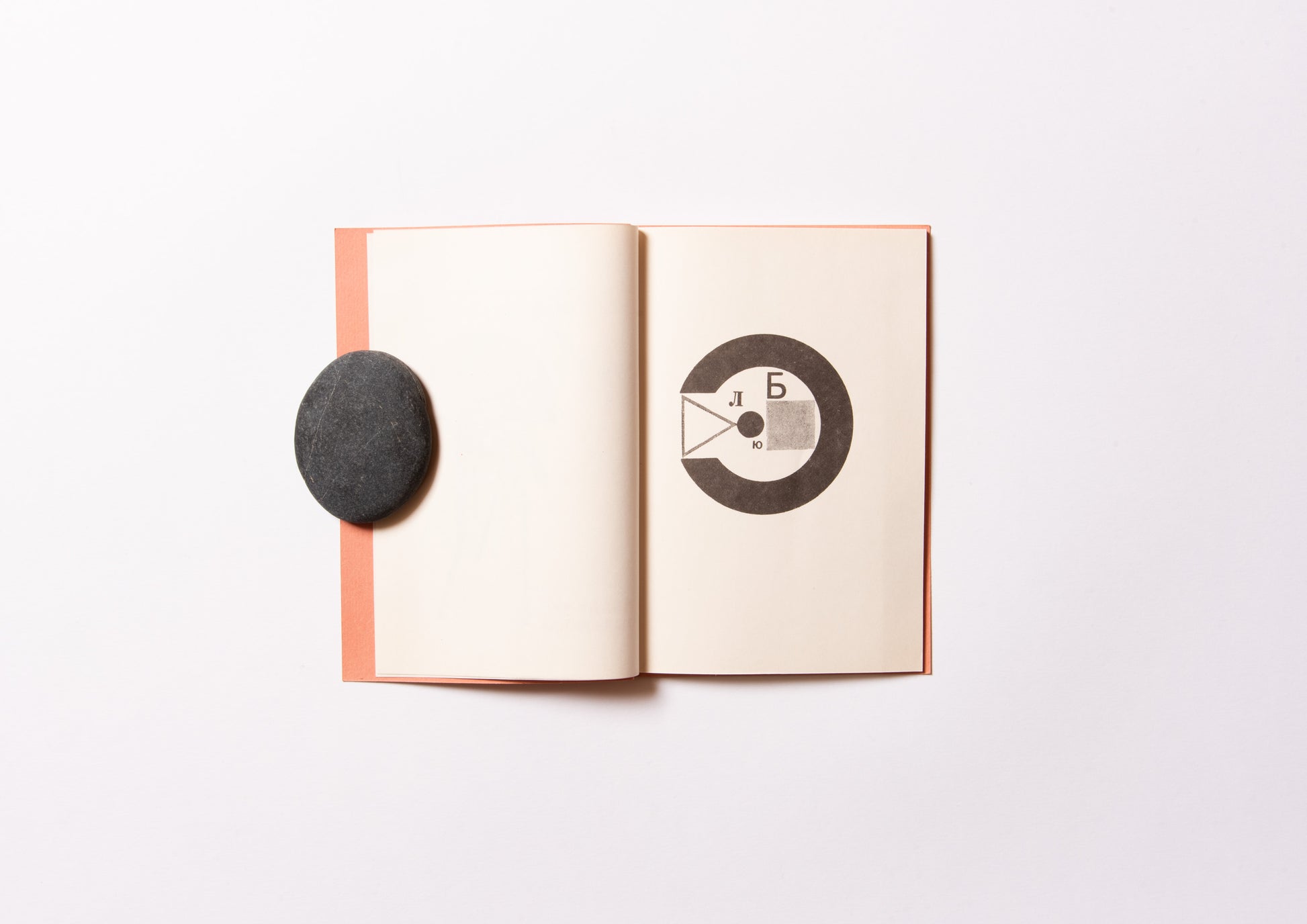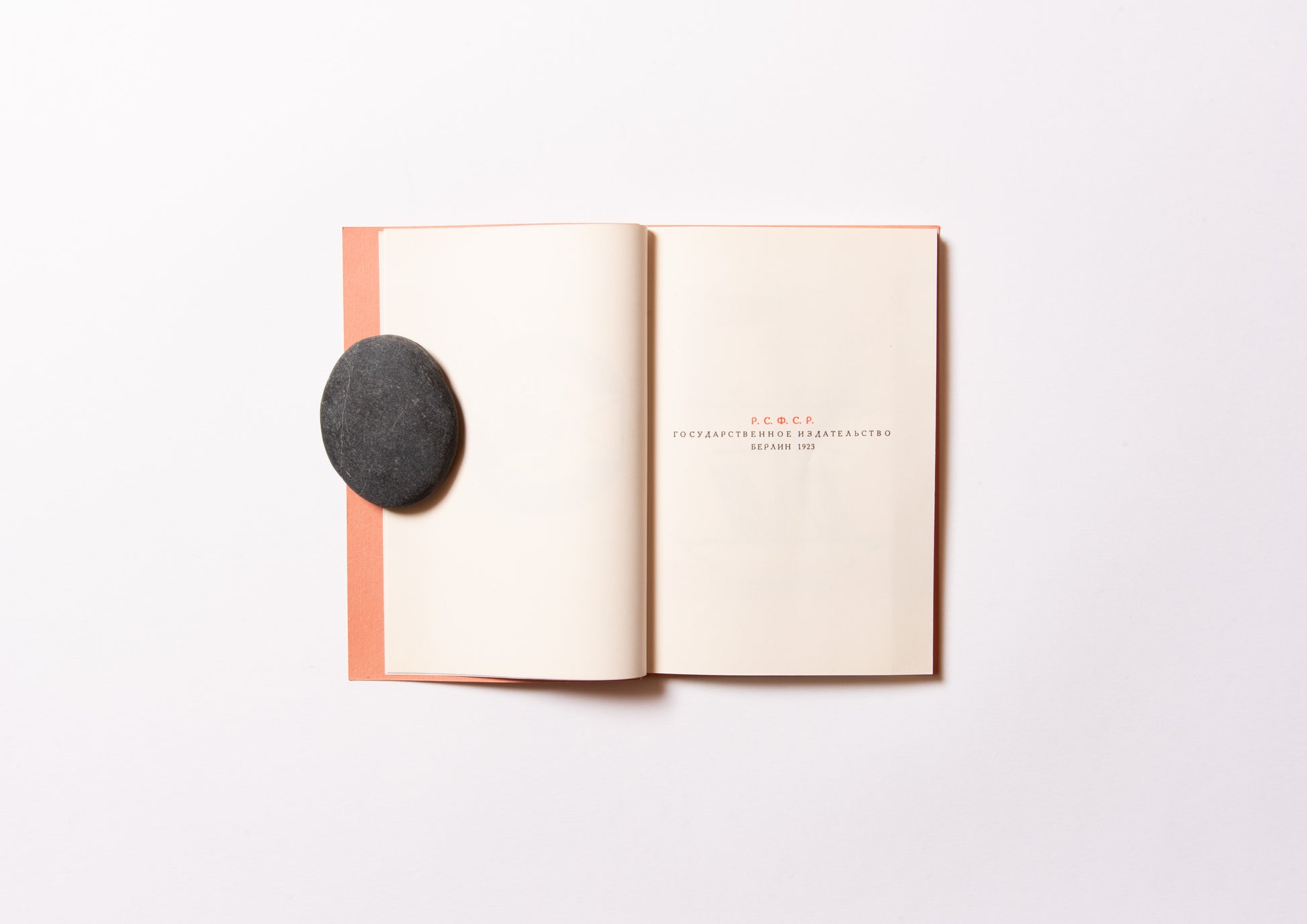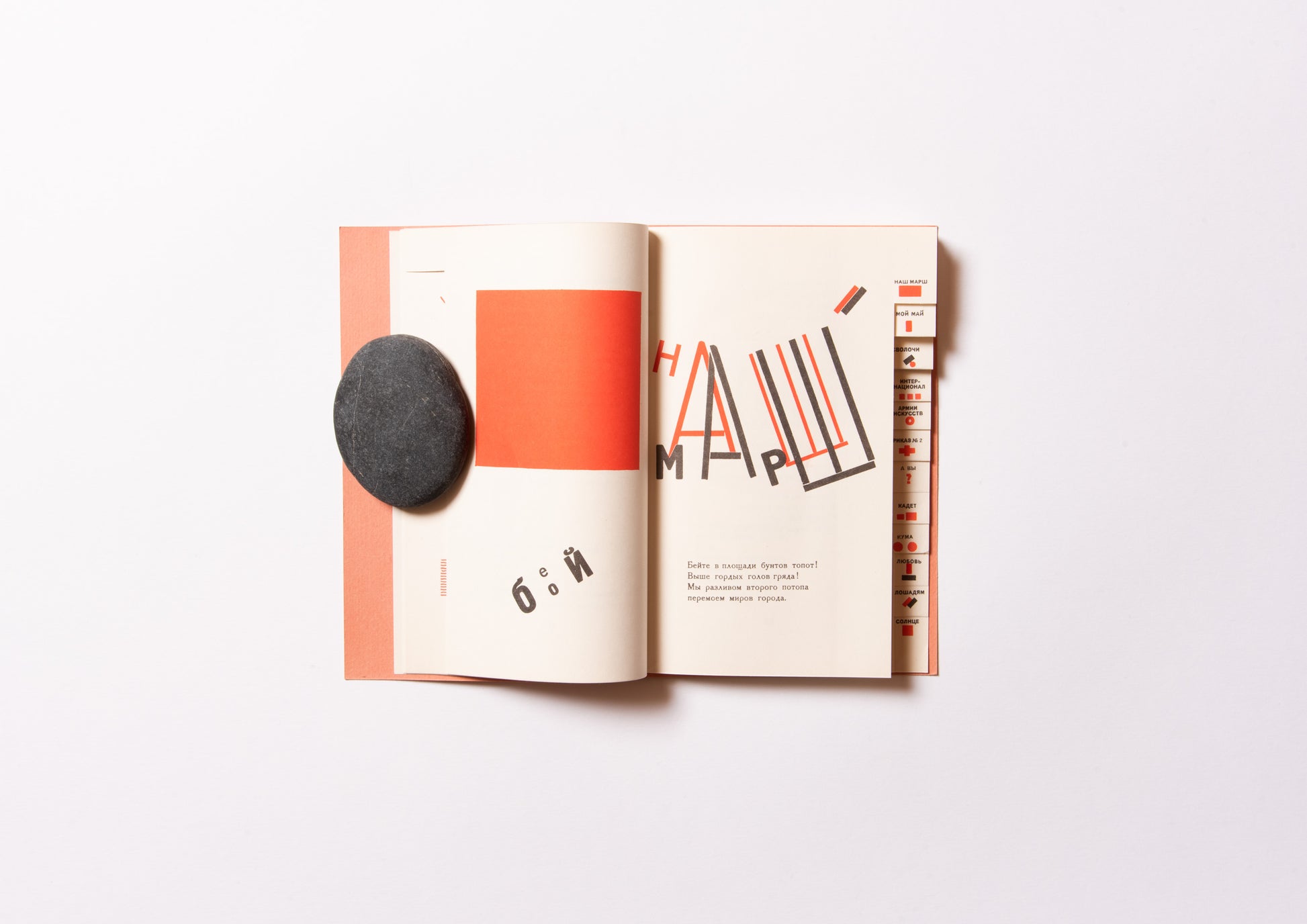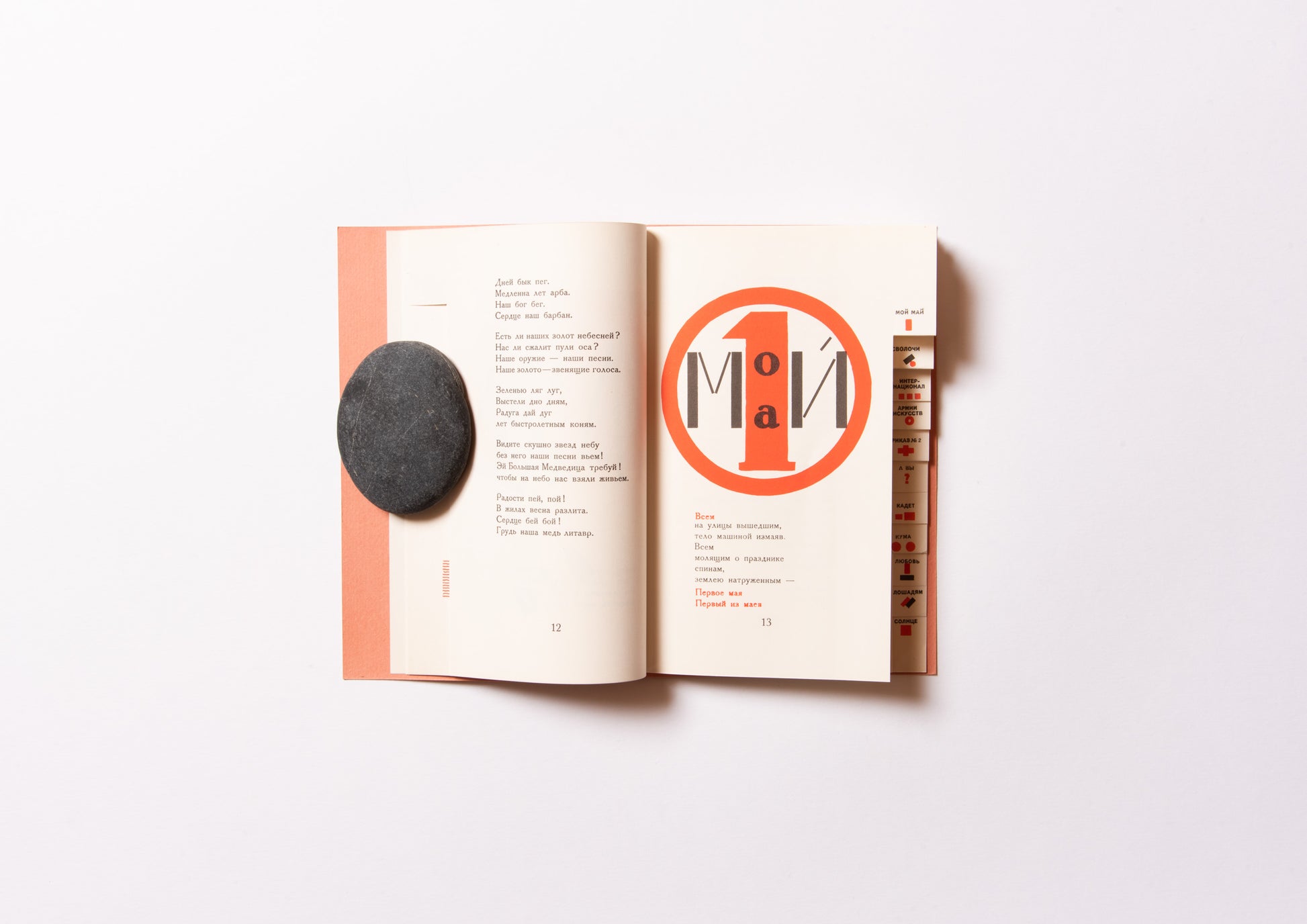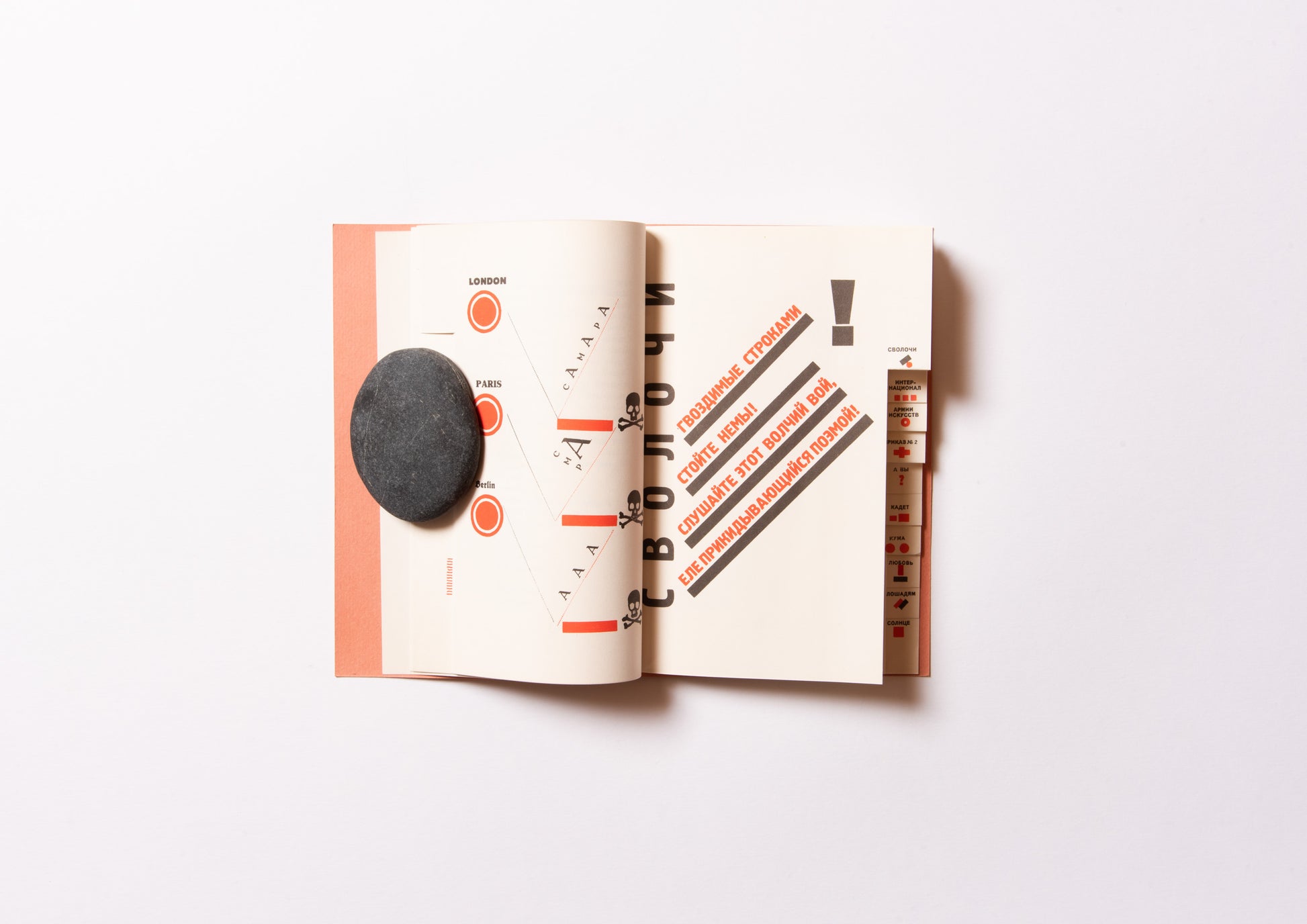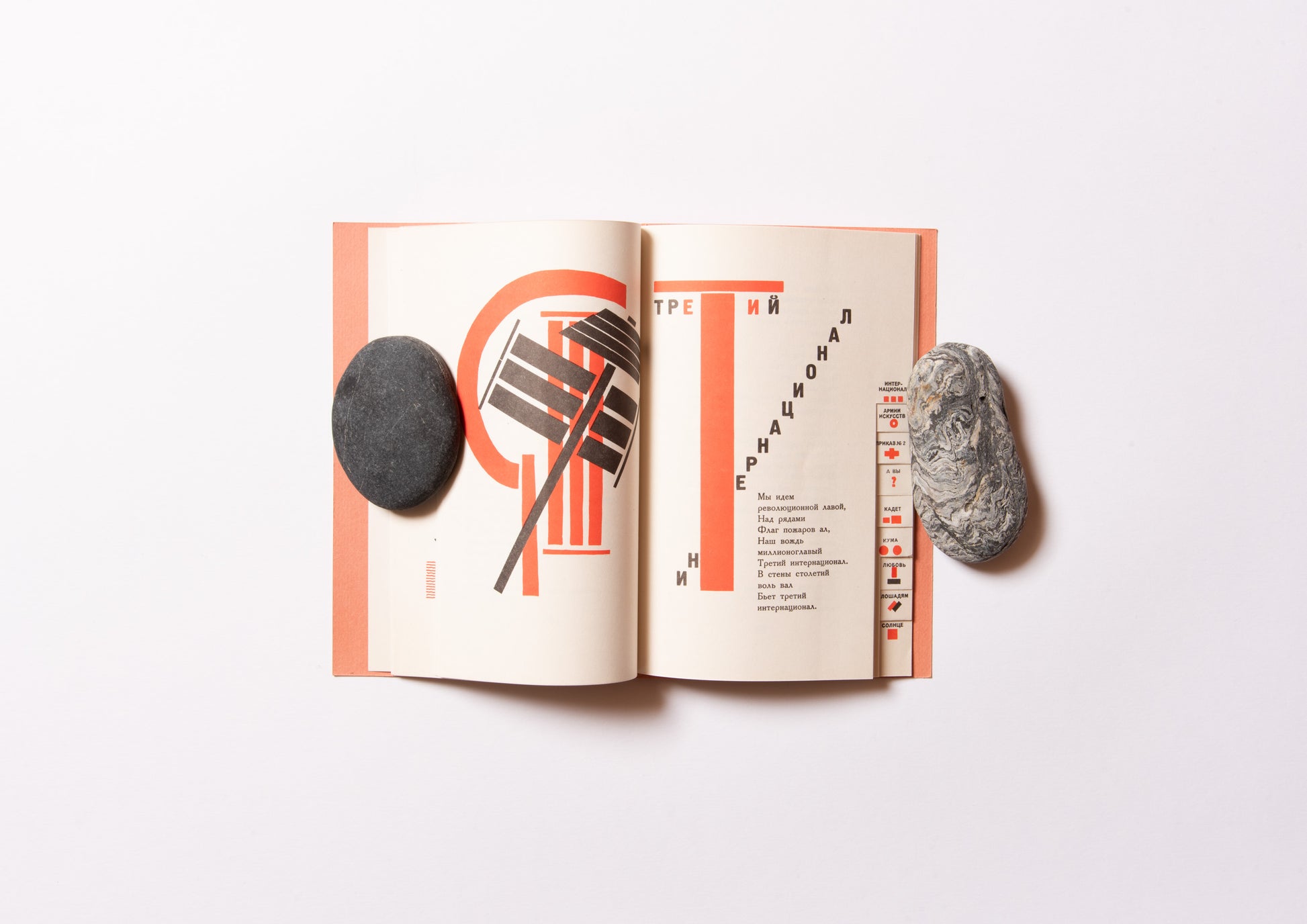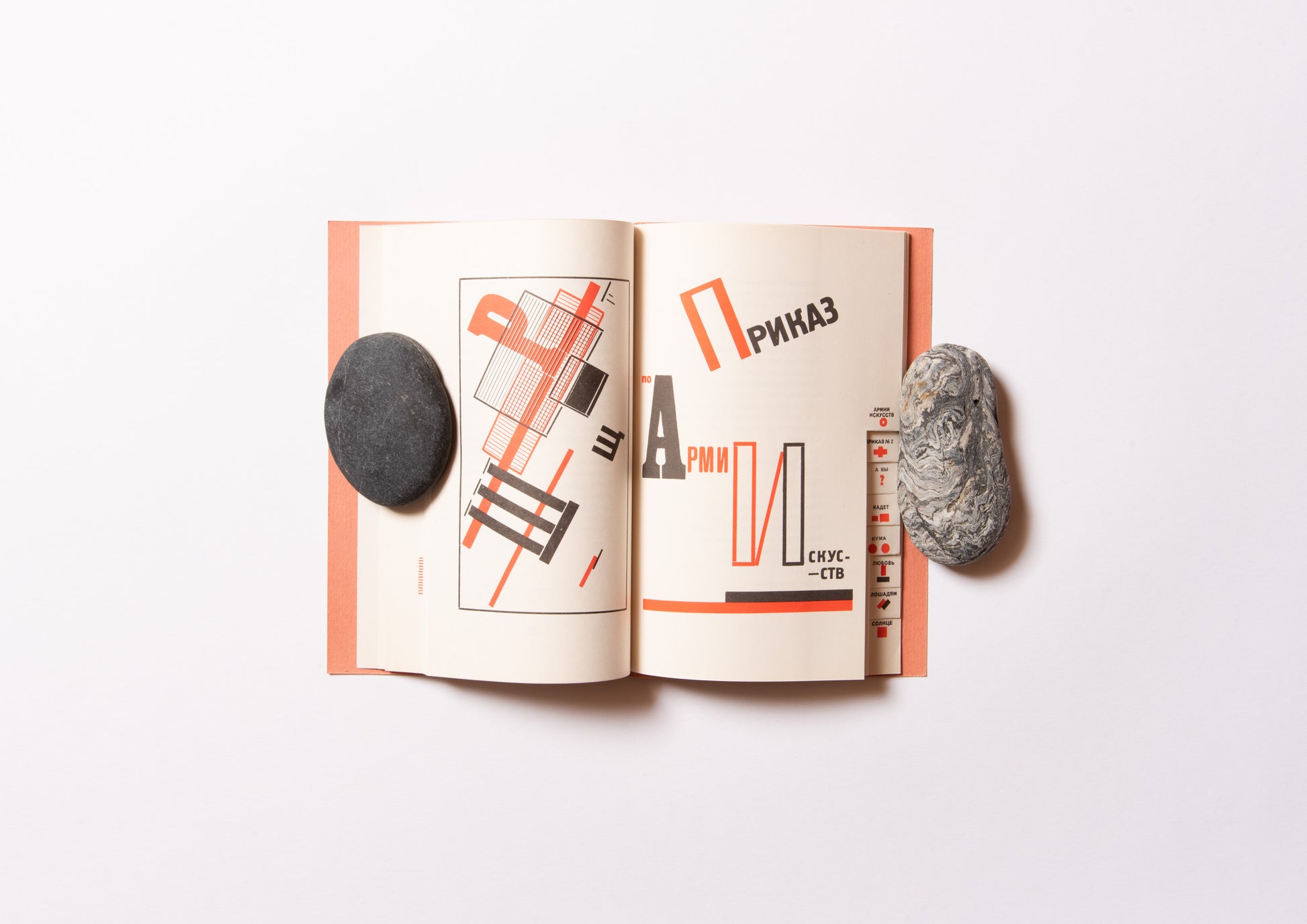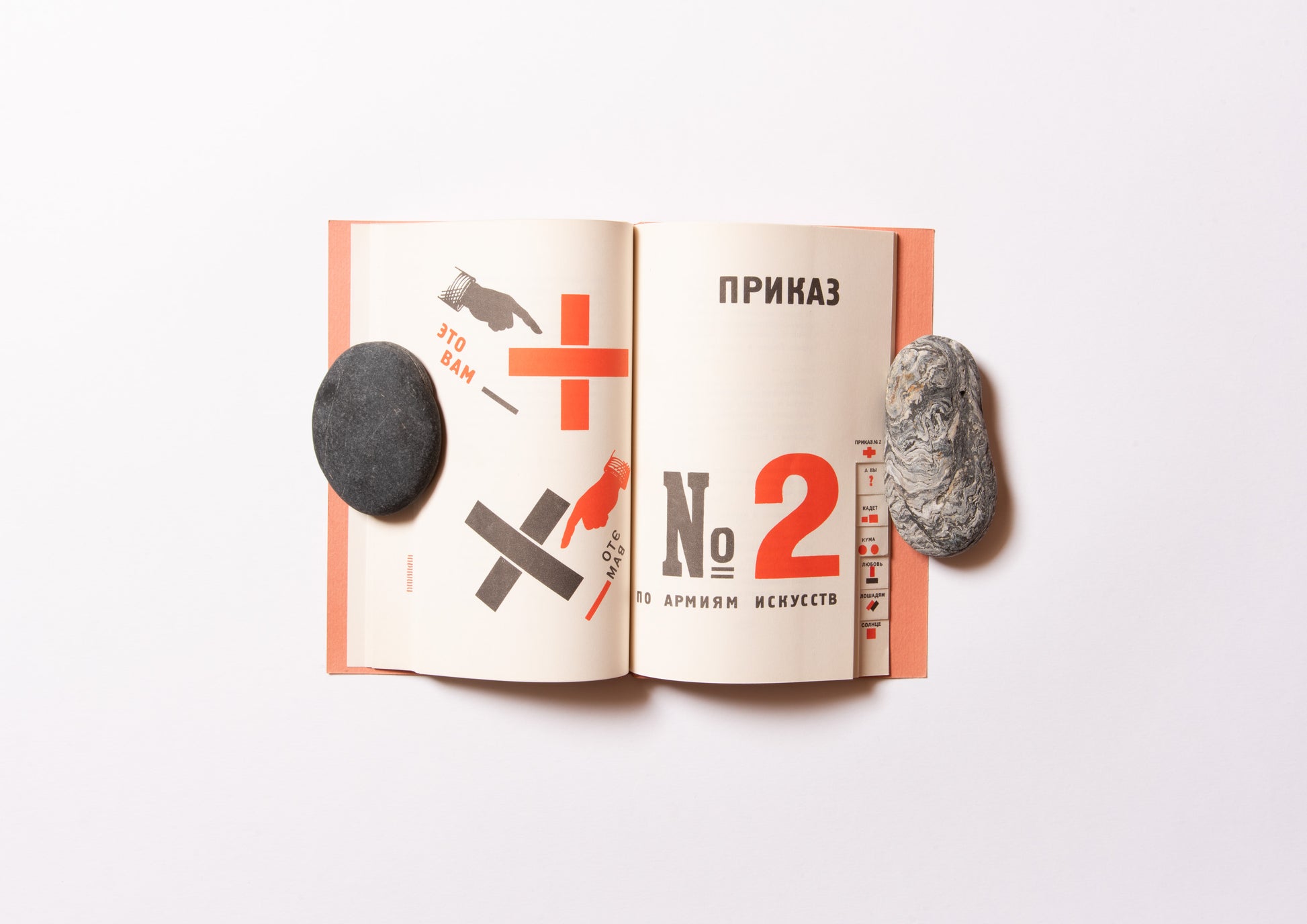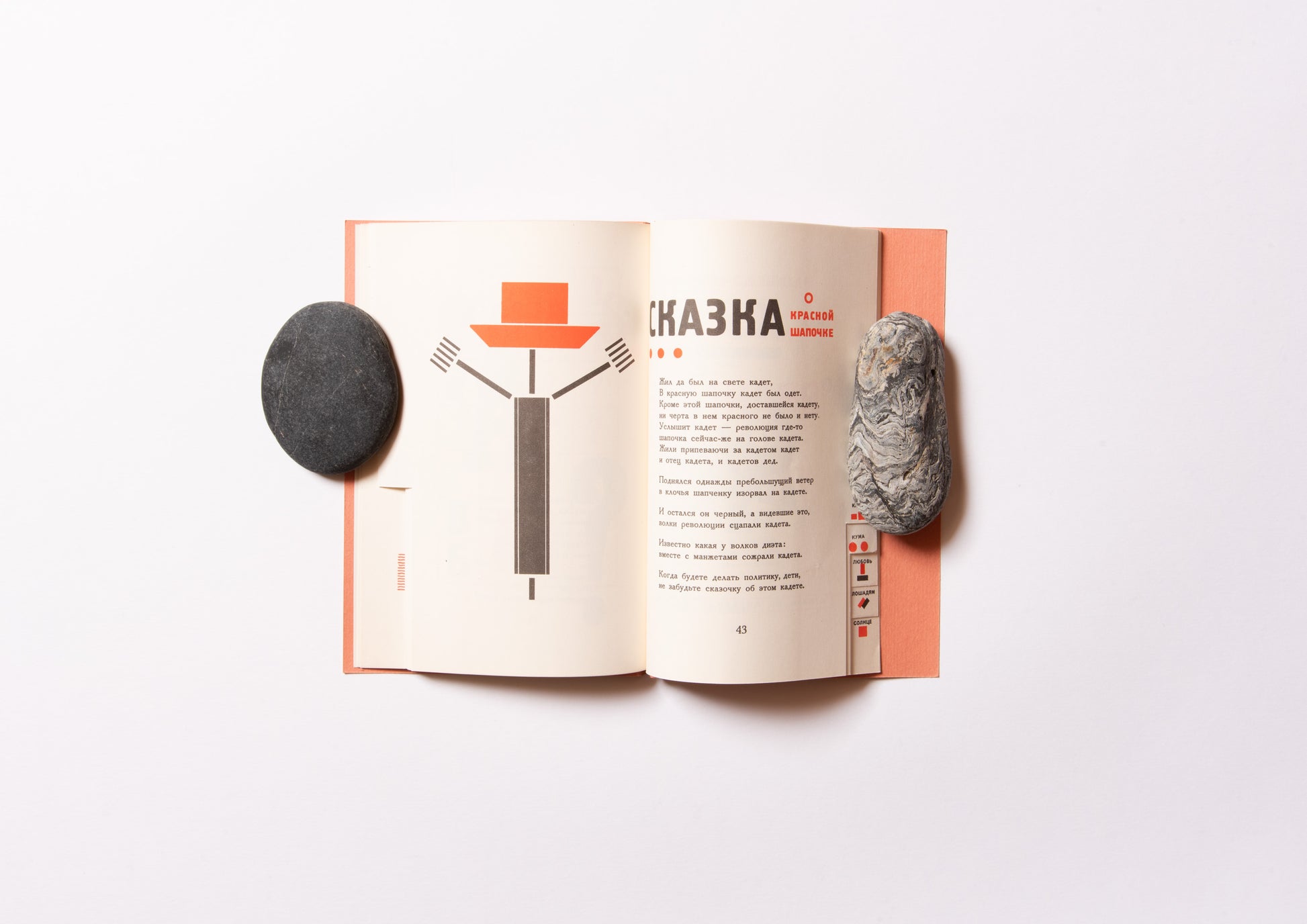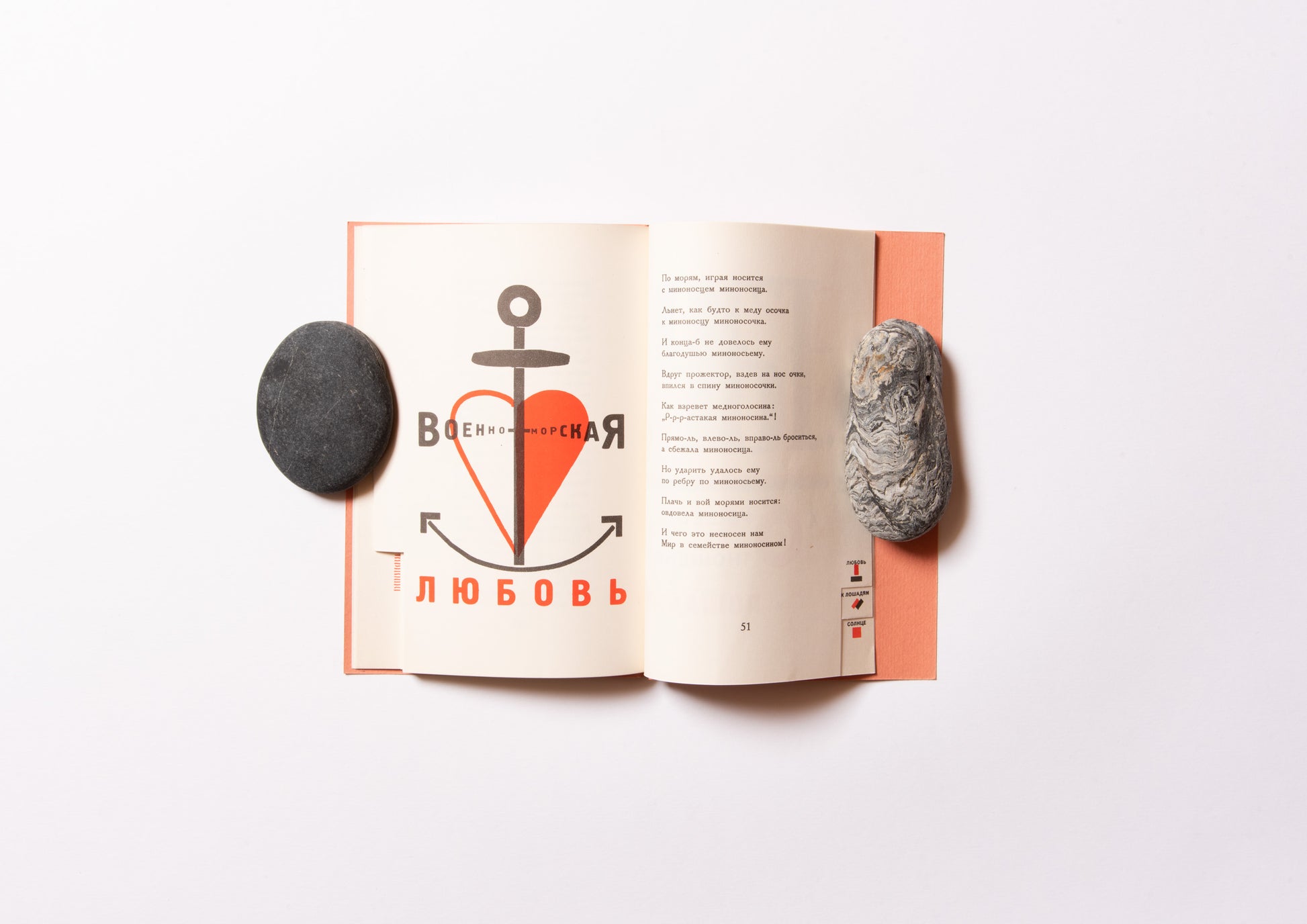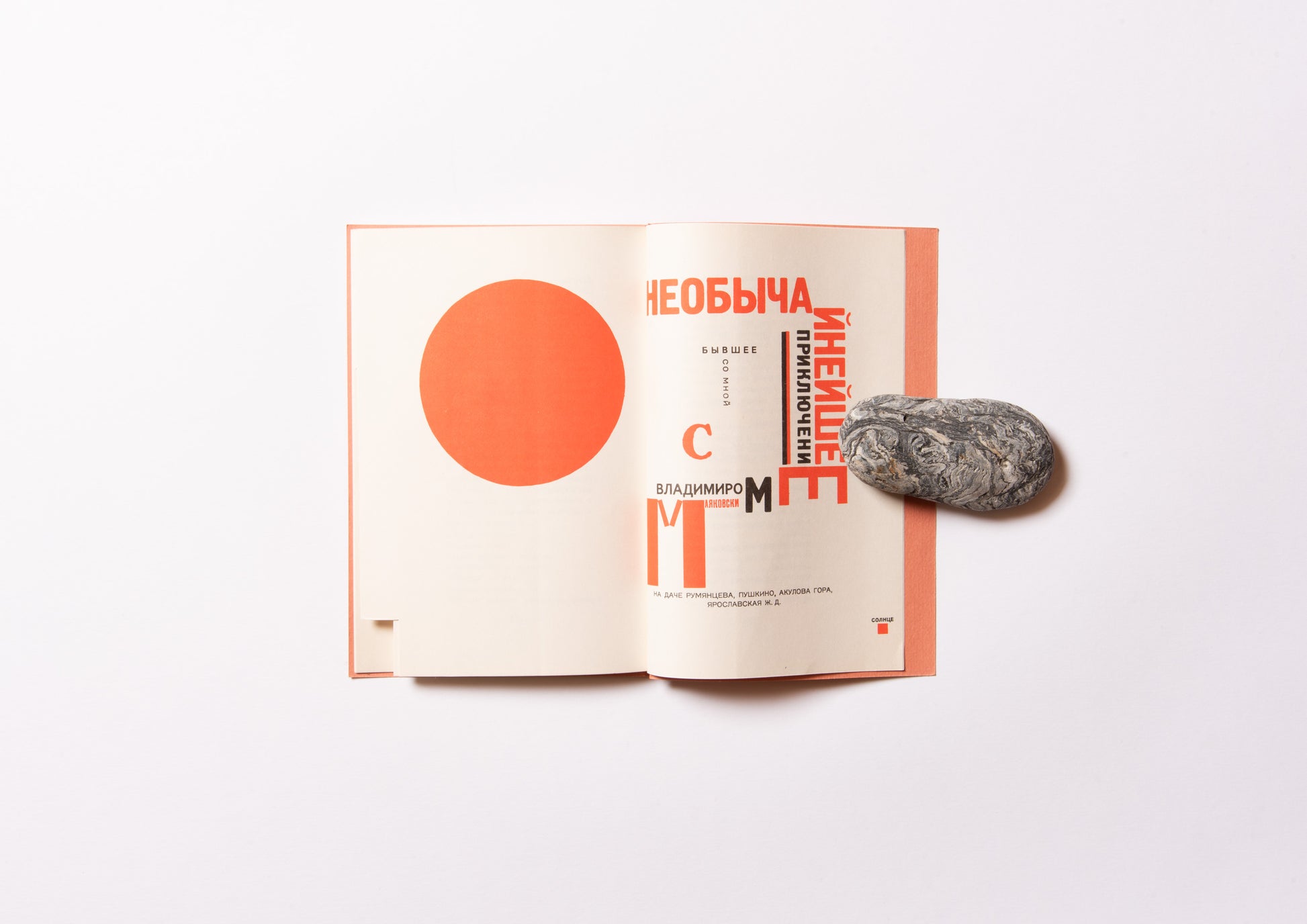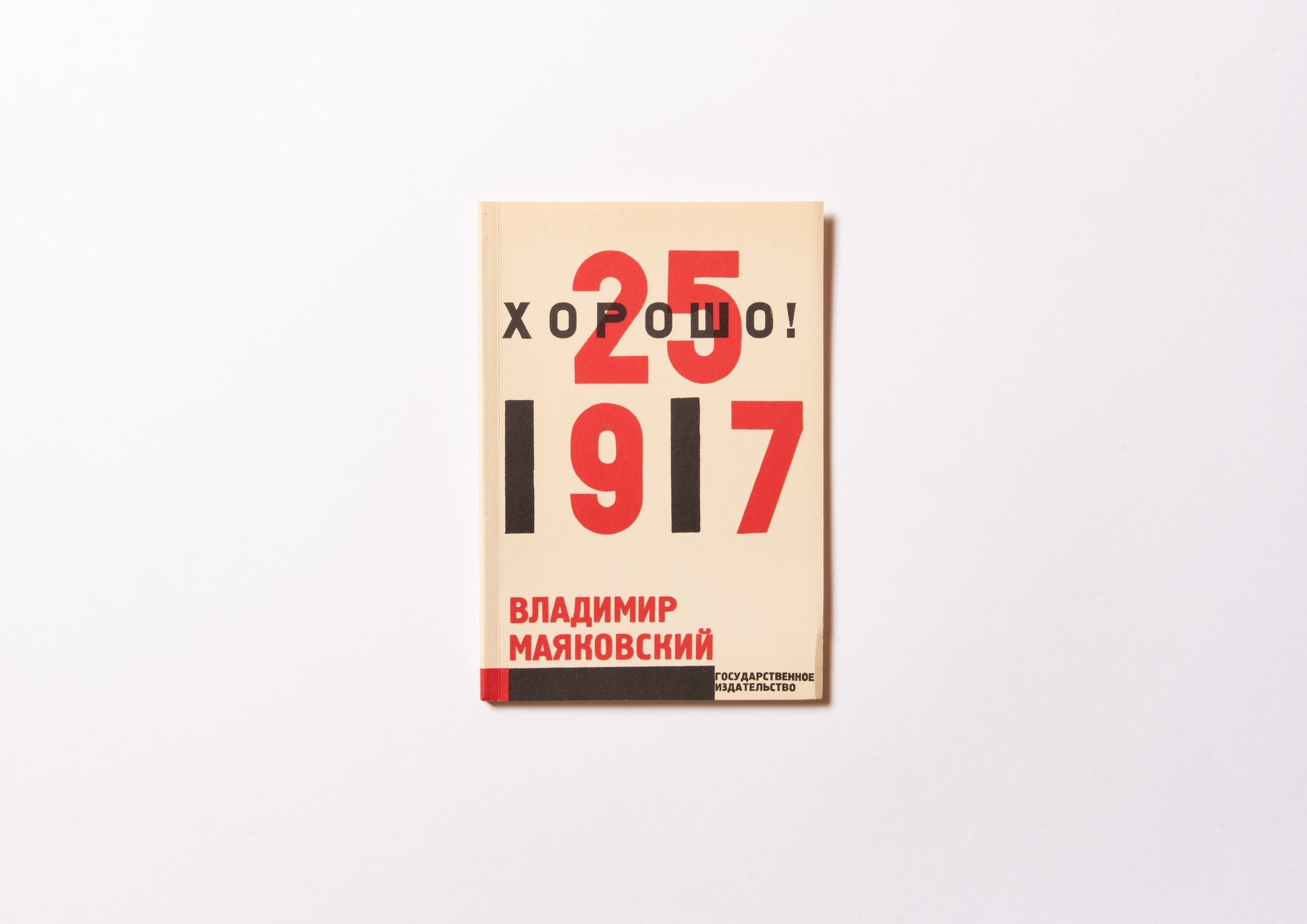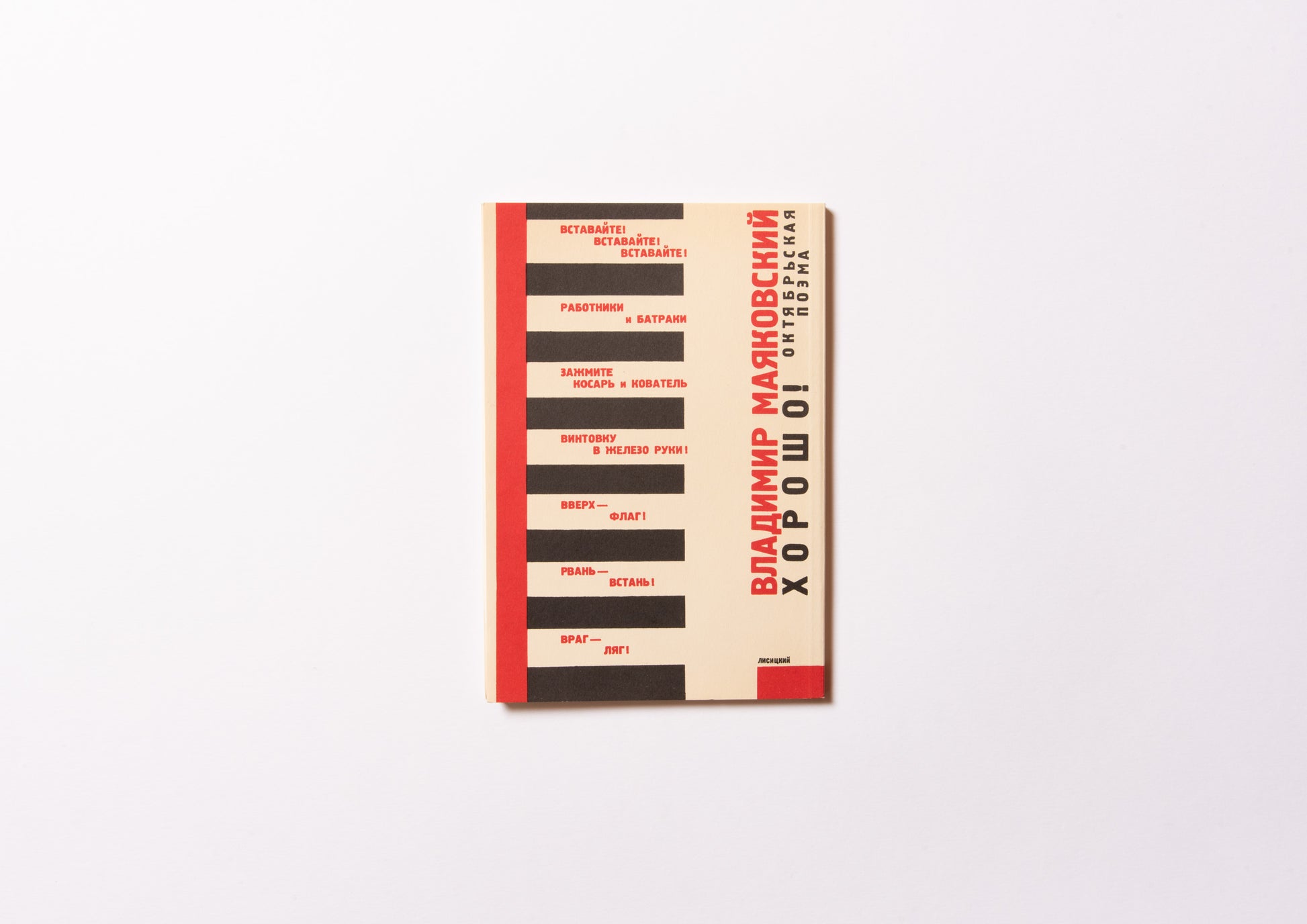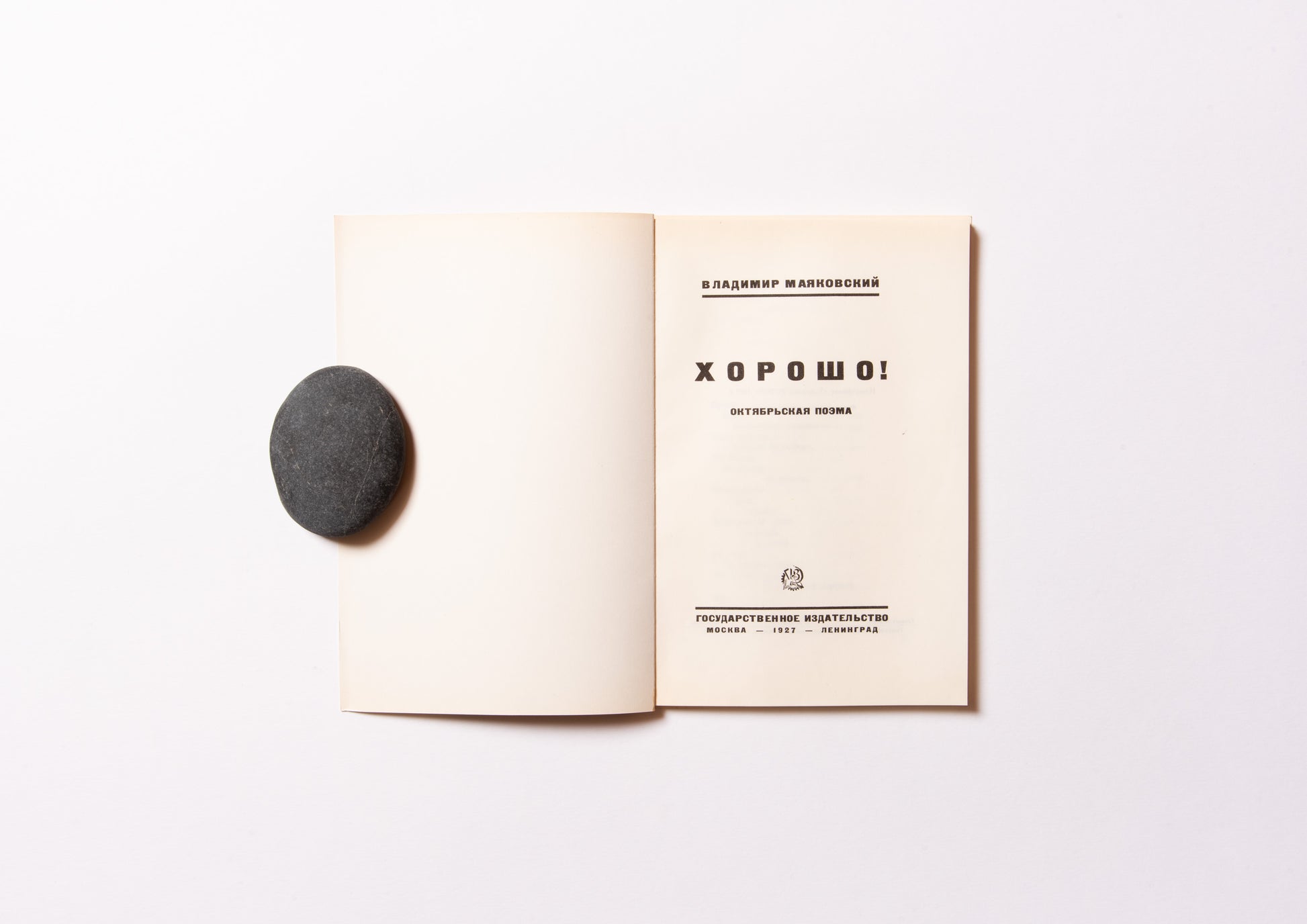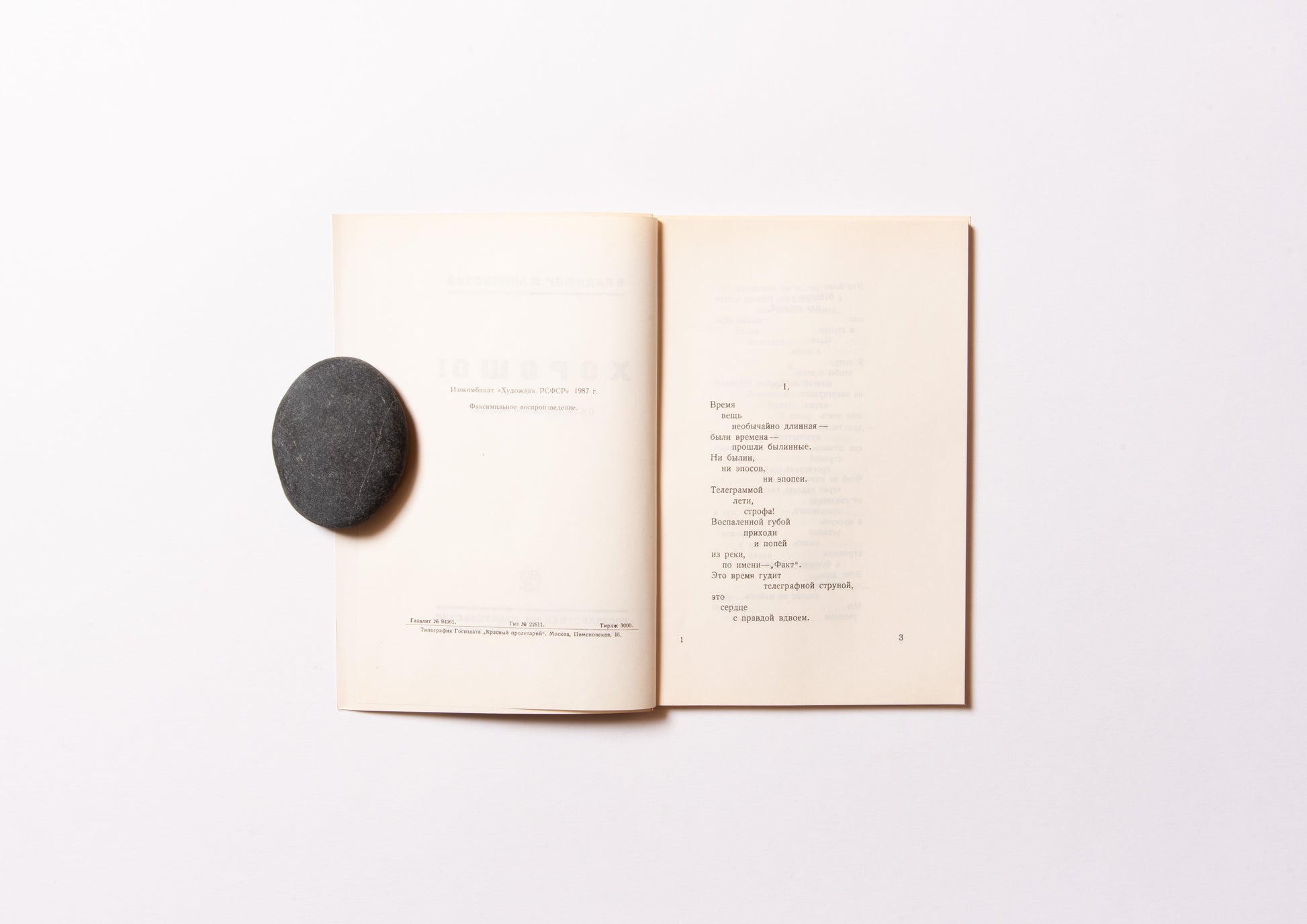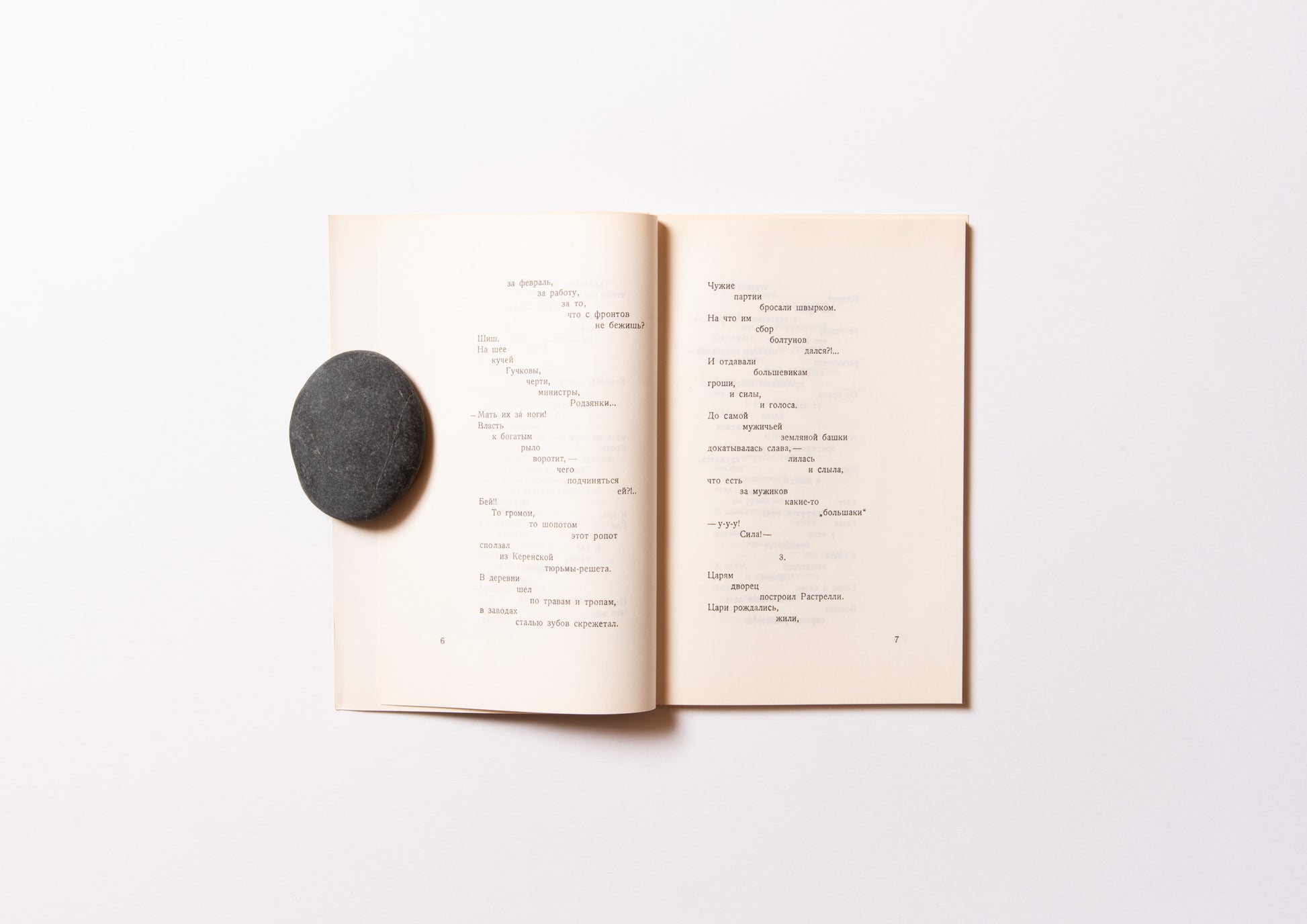For the Voice/Dlia Golosa in Russian
Bibliographic Details
- Title
- For the Voice / Dlia Golosa in Russian(声のために)
- Artist
- Vladimir Mayakovsky (ウラジーミル・マヤコフスキー), El Lissitzky (エル・リシツキー)
- Publisher
- Izokombinat Chudoznik (Leningrad)
- Year
- 1987
- Size
- h220 × w145
- Weight
- 320g
- Language
- Russian / ロシア語
- Binding
- Softcover / ソフトカバー
Poetry and typography.
Mayakovsky and Lissitzky
The October Revolution in concert.
This three-volume set includes facsimile versions of the originals of "Dlja golosa/For the Voice" and "Khorosho! Oktyabrskaya poema/Good! October poem," a collaboration between the Russian Futurist poet Mayakovsky and the artist El Lissitzky, as well as an explanatory essay by art historian Mikhail Yurievich German entitled "The Visible Voice of the Poet" (in Russian/in English).
It was published in 1987, just before the collapse of the Soviet Union, to commemorate the 70th anniversary of the October Revolution, which marked the first time in human history that the country left capitalism and embarked on the path to socialism. The book is designed to store the two volumes mentioned above in an inner pocket that opens on both sides. It also retains the nail-hook index that was (supposedly) the first in the world to be designed by Lissitzky for Dlja golosa/For the Voice. Based on 13 poems by Mayakovsky,An innovative attempt at book design that treats poetry and typography equallyAccording to Lissitzky, the aim of the binding design was to create a "book to be read out loud".
As an aside, Lilya Brik, who edited "Dlja golosa/For the Voice," was Mayakovsky's beloved, a married woman who sent him hundreds of love letters before she shot herself with a gun at the age of 36. She was also called the "muse of the Russian avant-garde" and a "vampire." In post-revolutionary Russia, she was considered a symbol of free love and female power.
Text by Osamu Kushida
